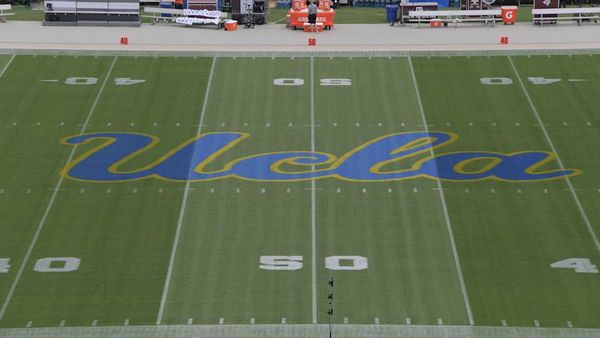
At first blush, SoFi Technologies (SOFI) seems an enterprise on the up and up. Most obviously, interested investors only need to consider the remarkable performance of SOFI stock. Since the beginning of this year, shares have skyrocketed to exactly double their value. In the trailing one-year period, SOFI gained slightly over 54%, hoping to spark a turnaround after its own shaky initial public offering.
Now, SoFi has come full circle, representing one of the 20 banks underwriting the IPO of grocery delivery platform Instacart, according to Bloomberg. As the news agency pointed out, SoFi has been involved with other public market debuts but only via special purpose acquisition companies (SPACs). This is the first time SoFi will take a crack at the traditional IPO market.
For the financial technology specialist, the decision to participate in the underwriting of the Instacart IPO is monumental. As Barchart contributor Mohit Oberoi alluded to, SoFi is best known for its student loan refinancing business. However, this endeavor also carries tail risk (i.e. black swan event), such as the COVID-19 pandemic and the subsequent student loan moratorium impeding revenue.
Moving forward, helping launch a traditional IPO would do wonders for SoFi’s reputation. It will also crystallize the enterprise’s efforts to be a full-service financial institution, not just a fintech specialist.
Still, the decision isn’t without risks. Generally, high-profile IPOs tend to be underwritten by industry stalwarts. So, Morningstar analyst Michael Miller suggested that “[i]t could just be a question of what SoFi offered to take part of the deal.”
Will the risk pay off for SOFI stock? Options traders aren’t exactly giving the most reassuring signals.
SOFI Stock Presents a Pressured Example of Unusual Options Activity
Following the close of the Sept. 12 session, SOFI stock represented a highlight in Barchart’s screener for unusual stock options volume. Specifically, total volume reached 129,852 contracts against open interest of 2.03 million contracts. Further, the delta between the Tuesday session volume and the trailing one-month average metric came out to 10.16%.
Looking at the transactional breakdown, call volume hit 83,173 contracts against put volume of 46,679 contracts. On paper, the pairing yielded a put/call volume ratio of 0.56, seemingly implying bullish sentiment. As well, the put/call open interest ratio sits at 0.67, which again apparently implies optimism.
Nevertheless, retail investors should be careful about reading the aforementioned ratios at face value. Primarily, that’s because while many traders are optimistic about SOFI stock, many others are pessimistic. This is evident in the implied volatility (IV) curve of SoFi derivatives.
To use a baseball analogy, IV is like the situational performance stats of an opposing batter. When IV spikes higher at certain strike prices, that’s similar to – and bear in mind that no analogy will ever be perfect – batters printing different batting averages depending on certain game situations.
So, while your starting pitcher may be doing very well, as a manager, you might know ahead of time that the opposing lineups’ bats light up (for whatever reason) the third time they face the same pitcher. At this point, you have a decision to make: do you “sell” the risk by going to the bullpen or “buy” the risk by sticking with your starter?
Generally, traders prefer selling options with high IV because the premium they collect is worth more than the risk they absorb taking a directional wager. You can see this same mentality play out in many baseball games.
Interestingly, the IV curve shows rising IV at both extremes of the strike price spectrum. Basically, one possible interpretation is that while traders are generally optimistic about SOFI stock, many are also accounting for and mitigating tail risk.
But given that IV is elevated at strike price extremes, options flow data – which screens for big block trades likely made by institutions – shows significant activity for bought puts. For instance, institutional traders have bought SOFI Jun 21 '24 5.00 Put options despite its present IV of 71% being well above the average IV of 50% for options with a $9 strike price – the same price as the open market price of SOFI stock.
In other words, the institutional traders may be buying the risk, which should give SoFi bulls pause.
Analysts Not Convinced About SoFi
Adding another wrinkle to SOFI stock is the analysts’ assessment. Presently, Wall Street is mixed on its prospects with a consensus hold rating. This breaks down as five strong buys, seven holds, one moderate sell and three strong sells. What’s more, the rating actually worsened over the past quarter.
Three months ago, Barchart shows that SOFI stock enjoyed a moderate buy consensus view. This assessment came out to six strong buys, five holds and one strong sell. At the current ratings score of 3.19, SOFI is only marginally better than a month ago, when it was rated at 3.07.
Also, the median price target clocks in at $9.86, which represents less than 10% upside potential. To be fair, the high-side target stands at $16, which symbolizes almost 78% growth. Nevertheless, the worst price rating sits at $3, which is a loss of nearly 67%.
Again, you have both sides placing their bets accordingly. Still, with many institutional investors apparently concerned about downside risk, retail folks should approach SOFI stock cautiously.
On the date of publication, Josh Enomoto did not have (either directly or indirectly) positions in any of the securities mentioned in this article. All information and data in this article is solely for informational purposes. For more information please view the Barchart Disclosure Policy here.






